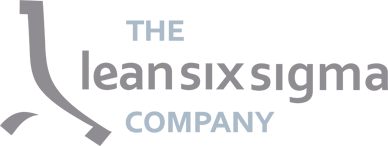One of the many tools in the Lean toolbox is the 5S methodology. Originating from a Japanese management philosophy, the 5S methodology refers to the five Japanese words which describe cleaning or tidying up. Keep in mind 5S is actually more than a tool, form it’s Japanese heritage it also reflects a mindset, that of an organized thought process, which is reflected in the use of the tool in your workplace. Within Lean, this methodology and mindset is specifically used to make the workplace more efficient, which creates a base from which continuous improvement is made possible. This ultimately means that the companies’ performance are positively influenced as well!
How it works
To use the 5S methodology, you will have to follow the 5 steps that make up the method. As it should be with Lean tools, it really is that simple. To get you started, we will describe each of the 5 steps below.
Seiri: separate and sort
Many workplaces are filled with items that are rarely, if ever, used. People simply tend to collect things. Within this first step, you will start to determine which items are actually necessary for the tasks at hand. Choose an area to start with and start placing tags or stickers on every item that is not needed for the operation, is not in the right place or is not present in the right amount. All these items are then brought to a central collecting area. They can only leave this area when someone can and will actually use them. This way, items are redistributed to where they are needed. Items that are not collected after a certain amount of time, say a month, can be removed, recycled or otherwise disposed of.
Seiton: arrange and organize
The next step is all about giving things a permanent place in your workspace. First, remove every single remaining thing and place them a short distance away. Then categorize all the items based on their frequency of use. Hourly, weekly, monthly and yearly categories can suffice, but feel free to create categories that suit you and your team. After this categorization process, you can place the most frequently used items the closest to the place where they are needed. The other items are placed further away.
Now that all of your items are placed in the right spots, you will need to make sure that they will be put back there after they are used. Combine it with Visual Management, where you draw lines on the floor with paint where the paint cans should be, or trace the tools on the wall to create visual reminders of their placing. In office spaces, Seiri is for instance strongly reflected in the Clean Desk Policy.
Seiso: clean
With unnecessary items removed and the remainder organized, it is time to make sure the workplace is clean and remains so. The first thorough cleaning session is straightforward, but arranging for it to remain clean is far less simple. To guarantee the cleanliness of the workspace, it is vital that you create a cleaning process and that you and your colleagues subsequently stick to it. Clean workspaces are safer, more productive and run more smoothly, so don’t save energy on this step! The added benefit is it creates ownership, after thorough cleaning you will consider that area in the work yours!
Seiketsu: standardize
Now you will work on standardization by creating a consistent approach to the way tasks and procedures are executed. The first goal is to set ground rules for the workplace in which 5S-tasks are integrated in the regular working tasks.
The second goal is all about prevention. Set up clear rules to prevent accumulation of unnecessary items, breakdown of procedures and prevention of contamination of machines or materials. Build structures and set up rules to make sure you meet these two goals of Seiketsu.
Shitsuke: hold on to the changes
The last step is probably the most difficult one of the 5S method. Holding on to the changes made is not very straightforward, because it is all about behavior. Maintaining the previous 4 steps and making a habit out of them is the goal of Shitsuke. People are generally hesitant to change and altering set behavior can be difficult.
To make it easier, there are many things you can do. Try making pictures of the desired situation, creating newsletters or guidebooks, have team- and management audits and schedule stand up meetings to ensure you and your team will hold on to the changes made!
Getting started with 5S
Are you interesting in learning more about the 5S method? Take a look at our online 5S course! In this short online course you will learn all the details of the 5S method, its steps and how to put it all into practice right away. Or if you’d like to learn more about how to start working with 5S or Lean Six Sigma, just send us an e-mail and we will gladly help you get going!
Want to learn more or have a question?
Request our prospectus.
